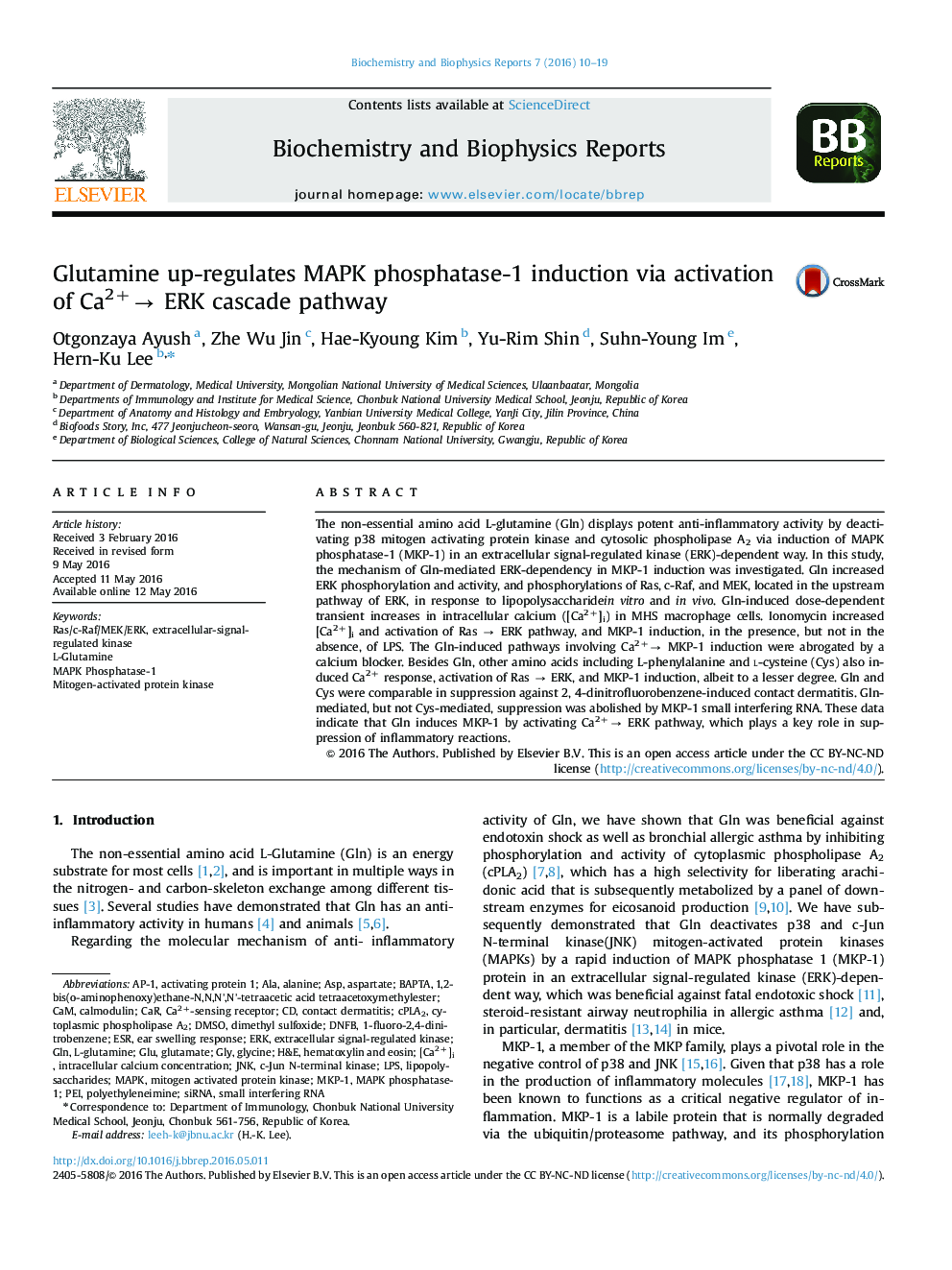| Article ID | Journal | Published Year | Pages | File Type |
|---|---|---|---|---|
| 1941593 | Biochemistry and Biophysics Reports | 2016 | 10 Pages |
The non-essential amino acid L-glutamine (Gln) displays potent anti-inflammatory activity by deactivating p38 mitogen activating protein kinase and cytosolic phospholipase A2 via induction of MAPK phosphatase-1 (MKP-1) in an extracellular signal-regulated kinase (ERK)-dependent way. In this study, the mechanism of Gln-mediated ERK-dependency in MKP-1 induction was investigated. Gln increased ERK phosphorylation and activity, and phosphorylations of Ras, c-Raf, and MEK, located in the upstream pathway of ERK, in response to lipopolysaccharidein vitro and in vivo. Gln-induced dose-dependent transient increases in intracellular calcium ([Ca2+]i) in MHS macrophage cells. Ionomycin increased [Ca2+]i and activation of Ras → ERK pathway, and MKP-1 induction, in the presence, but not in the absence, of LPS. The Gln-induced pathways involving Ca2+→ MKP-1 induction were abrogated by a calcium blocker. Besides Gln, other amino acids including L-phenylalanine and l-cysteine (Cys) also induced Ca2+ response, activation of Ras → ERK, and MKP-1 induction, albeit to a lesser degree. Gln and Cys were comparable in suppression against 2, 4-dinitrofluorobenzene-induced contact dermatitis. Gln-mediated, but not Cys-mediated, suppression was abolished by MKP-1 small interfering RNA. These data indicate that Gln induces MKP-1 by activating Ca2+→ ERK pathway, which plays a key role in suppression of inflammatory reactions.
